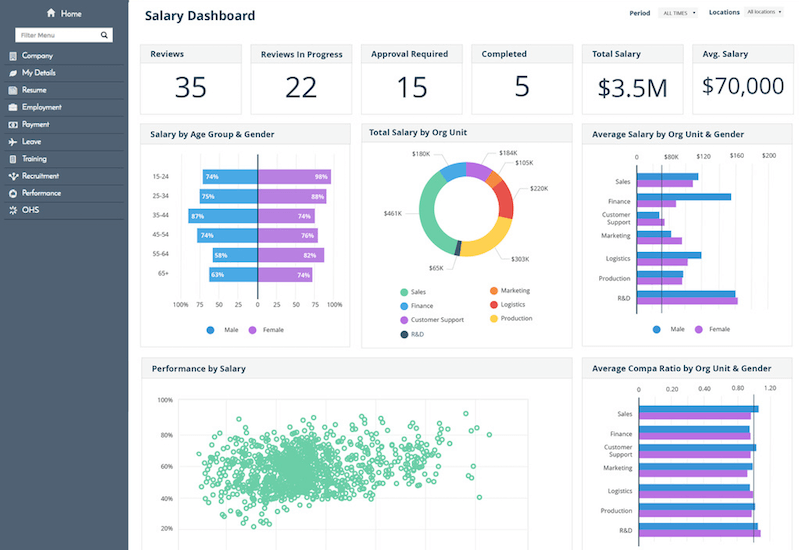
Strategic Decisions With HR Dashboards
The current economic climate is asking all of us to deliver measurable results, demonstrate value and justify decisions. For the HR professional, this spells an opportunity to enhance the role of a strategic business partner. However, to be truly effective in this regard, there is a requirement for accurate and relevant metrics. These metrics should not only report results but also be the first stage in building the case for policies, procedures and strategies that impact business results, drive change and build competitive advantage. In practical terms, this involves the HR professional strategically leveraging measurement to provide a deeper insight.
There is no doubt that an HRIS, and in particular, the embedded reports, can be used to assist the strategic decision-making process. This process is greatly enhanced with access to ‘what if’ scenarios, historical analysis and logical reasoning, so data is consolidated, integrated with all the HR modules and relevantly delivered with a simple user experience.
Enter the dashboard
As humans, we absorb text-based information very slowly. We are pattern-seekers and use our visual perception to detect meaning that might otherwise remain hidden. No, I am not heralding the end of classical reports, but imagine if you could spot trends, identify anomalies and use those insights toward effective decisions with a mouse click? Visualisation makes the complex data embedded within an HRIS clear and immediately actionable.
Dashboards deliver in this regard. By linking human perception to the data presentation, they communicate information in real time with clarity, supporting meaning and usability. They use visualisation tools like charts, gauges and maps, bringing high-impact, predictive insights to meet operational, analytical and strategic requirements.
Typically they are anchored to performance indicators, goals or targets. They also offer interaction by switching between aspects of the data, historical analysis, benchmarking and drill down analysis into the root cause.
Lots of data, but no idea
To ensure a successful dashboard journey, you will require a holistic approach to your HRIS strategy. This includes an accurate reflection of your organisation structure, competency framework, integrated HR modules, single user dataset and security profile, workflow engine, and a comprehensive and flexible analytical layer with dashboard technology. This will give you the operational and transactional framework that captures, validates and pivots the data. Furthermore, dashboards need to be implemented and configured in such a way, seeking quality over quantity, allowing you to clearly answer the most important workforce-related questions. It’s this logical approach towards decision making which offers strategic empowerment through insight and analysis.
The context of interpretation is also very important. That is, make the data talk and present it in a way that drives decision making. For example, instead of reporting the ageing workforce, allow the illustration of what the workforce will look like in 5, 10 or 15 years’ time. This kind of ‘what if’ scenario building allows you to explore the consequences of inadequate bench strength. Another example is the ‘what if’ analysis of consolidated remuneration under a review scenario. Analysis usually means selecting an employee demographic or location and applying the increase. The direct impact of a change in remuneration is immediately apparent, but don’t stop there. Look into the history and analyse relationships between other functions such as performance, training and length of service.
Dashboards can also be configured in such a way to provide competitive insights. In most organisations, the hiring and promotion decisions are made by the line managers. Presenting them with accurate talent analysis embeds a level of quality in their decisions. For example, understanding the sources of departure, reasons for departure, and sources of high performers and potentials provides insights that build strategies for retention and hiring.
Finally, it may be wise to include dashboards demonstrating compelling logic that address the solution, as well as compelling dollars that address the ROI of a solution. There is always pressure to show ROI and value, but the ‘why and how’ that define a business case for making the investment in the first place and how the proposed investment will solve a problem, are equally important. It’s all about the information that supports decision making.
